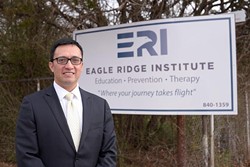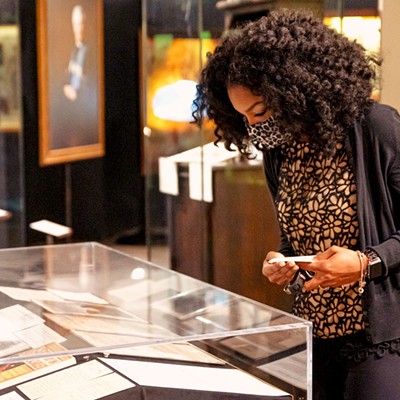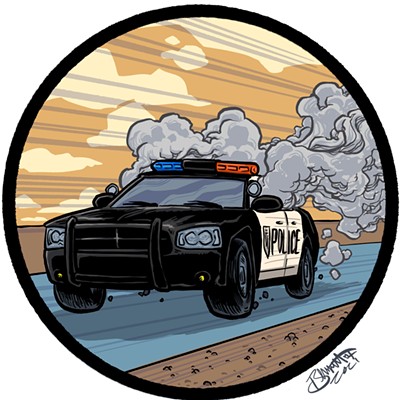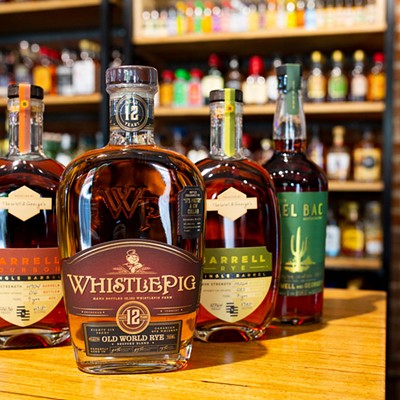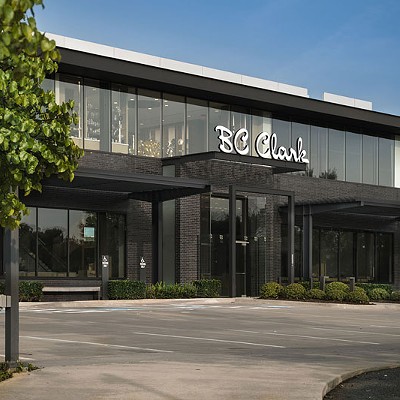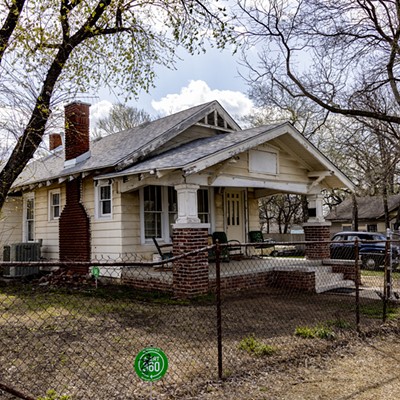Editor’s note: Pseudonyms are used to protect anonymity and are noted within the story.
“I drank alcohol and codeine and promethazine. I abused Adderall, Xanax, OxyContin, Hydrocodone … I huffed gas, glue and air duster; I smoked K-2 and, of course, marijuana,” Todd told Oklahoma Gazette. “I struggled with self-harm, suicidal thoughts and shoplifting. Basically anything I could use to get me out of my mind.”
Todd, who didn’t want to use his real name in order to protect his anonymity, is 18 years old and began using drugs and alcohol when he was 15. He said he used to be a straight-A student who was very involved in his church and community. By his freshman year of high school, everything changed.
“I had been a good kid for so long I wanted to do something bad,” Todd said. “I noticed a group of upperclassmen who would leave the cafeteria at lunch to smoke cigarettes in the parking lot. One day, I got enough balls to follow these guys outside and ask for a smoke. I felt like I fit in. Soon after, I smoked weed for the first time.”
Statistics from the Pacific Institute for Research and Evaluation show that in 2013, underage drinking cost the state of Oklahoma more than $1 billion, including lost work, medical costs and pain and suffering associated with problems that go along with underage alcohol and substance abuse.
The Oklahoma State Department of Health and the Centers for Disease Control and Prevention have some alarming statistics as well. The 2015 Youth Risk Behavior Survey showed that among Oklahoma’s public high school students, 64 percent had ever drank alcohol, 27 percent drank within the past 30 days and 17 percent admitted to having five or more drinks, or “binge drinking,” during the past 30 days.
In that study, 32 percent of Oklahoma’s public high school students admitted to ever using marijuana, and 14 percent said they had taken prescription drugs without a doctor’s prescription. Fifteen percent said they were offered, sold or given illegal drugs on school property within the past 12 months.
One of the worst times for Todd was when he began using the drug K-2.
“I hated the high it gave me; it was too intense,” he said. “But I was being drug-tested by my school. … I still smoked it multiple times a day for a year because it was the only thing I could get away with.”
One day, Todd took two hits and immediately knew something was wrong.
“Normally, the high would last two hours, but this lasted all day,” he said. “I had to skip my first hour because I couldn’t talk and my heart was beating fast. It felt like lava coming from my chest. My friends, who were also high, took me to the bathroom to try and sober me up. I leaned down in the sink, splashed water on my face and looked in the mirror. Time froze and I was able to look at my life.”
In that moment, Todd realized he needed help.
“I got kicked out of extracurricular activities, I was suspended from school, having to go to drug counseling, hurting my family, losing good friends, losing everything I love — and for what? To get high,” he said. “I didn’t even enjoy smoking this drug, but I felt I had to. Right then, I knew I wanted something different; I knew I didn’t want to get high anymore. Naturally, though, the next day, I was high again.”
The road to sobriety was painful, Todd admitted, and as his peers were enjoying sports and music and generally being teenagers, he was checking into rehab.
“At first, I didn’t want help,” he said. “After a huge fight, I was taken to a psych ward. After getting past the opioid withdrawals, I knew I was in a great position to change my life.”
Todd spent 10 days in inpatient psychiatric treatment before he was transferred to a long-term substance abuse treatment center, where he stayed for two months. He said he learned a lot, but he knew if he went back to the same school, he would not stay sober.
“One day, my mom called me in rehab and said she found a school for teenagers recovering from addiction,” he said. “It’s called TRS, or Teen Recovery Solutions, in Oklahoma City, so I decided to try it.”
Along with TRS, Todd joined a 12-step program and works with a sponsor who is teaching him how to live life on life’s terms.
“I have a community around me now that has gone through the same things as me and came out on the other side,” he said. “I get to learn from them and, at the same time, give back what has been given to me by helping those new to recovery. … It is an ongoing battle. As an alcoholic addict, I cannot drink or use normally. I know I will never be able to just have a glass of wine or a can of beer. In some ways, I am thankful for that. It means every day for the rest of my life, I will have an opportunity to better myself.”
A father’s story
Youth substance abuse and addiction issues not only affect the person going through it, but family members and friends as well.
Kirk (not his real name), a father from Edmond, said his son was a University of Oklahoma freshman when he learned of his addiction.
“I thought he was only abusing marijuana,” Kirk said. “It was shocking to learn he had an addiction to pain pills.”
Coming to terms with his son’s issues was difficult, he admitted, but the warning signs were all there.
“His physical appearance had changed for the worse,” Kirk said. “He was lying to me. He had several minor traffic accidents and tickets. His possessions and his money went missing, and he started isolating himself.”
Ultimately, Kirk’s son came to him and asked for help.
“My wife and I both had to learn a new way to interact with our son,” he said. “We soon realized most of our ‘helping’ our son was actually allowing his addiction to continue. … Dealing with our son’s addiction was one of the most stressful events in our lives.”
His son relapsed after 90 days of inpatient treatment, and Kirk said he later learned that relapse is often part of the recovery process. The family started meeting with a licensed alcohol and drug counselor and set healthy boundaries with each other.
“What I would tell other parents who may be reading our story is to listen to your gut instinct,” he said. “If you think something is wrong, it probably is. Stop denying there is a problem. Educate yourself about addiction, join a support group, reach out for help, get involved in your local recovery community.”
Learning to take care of yourself is just as important as caring for your child, Kirk added.
“I would take better care of myself, focus on sleep, diet, exercise and my daily routine so when my son asks for help, I will be better able to provide it,” he said. “I would also focus more on my marriage. I felt like the addiction was trying to force my marriage apart.”
One of the best pieces of advice Kirk said he can offer is that parents join a parent support group early in the process. He and his wife joined Parents Helping Parents. Sharing experiences with others is great therapy, he said. And the bottom line is to not lose hope.
“There are millions of people living meaningful lives in recovery,” he said. “Don’t ever give up on the hope of recovery.”
Before it starts
One key to curbing youth addiction is to prevent it before it begins, which means getting the message out to at-risk youths and their families about the dangers of underage alcohol and drug use.
Oklahoma City’s Eagle Ridge Institute has offered prevention programs since its inception more than 25 years ago. It includes a residential treatment facility in Guthrie that serves mothers and children and two prevention programs in Oklahoma County.
“We take an environmental approach in addressing the problem,” said August Rivera, Eagle Ridge community outreach preventionist. “We have two coalitions that guide our programs; these coalitions are made up of community leaders, law enforcement and the community at large. We believe that in order to make any kind of change in the issue of addiction, prevention needs to be the key. And having the community involved and engaged would be the best way in addressing it.”
Rivera said Eagle Ridge promotes education about the dangers of drug and alcohol use, thereby hopefully preventing a tragic accident, which could be death from overdose or killing someone while driving under the influence. A number of other negative consequences can also come into play, he said, including failed relationships, rape, job loss, criminality and negative health impacts.
“Currently, our focus is to create programs addressing substance use by having youth help us create those programs,” he said. “We feel if the message is coming from peers, most adolescents will pay attention to it more. Our hope is that this adult-guided youth coalition will create a message that adolescents would be more responsive to.”
The ultimate goal, Rivera said, is to make sure teens have the right information about alcohol and drugs so they can make informed decisions and avoid destructive behaviors. He said those in recovery have to acknowledge their triggers and avoid influences that got them into the situation in the first place.
On a whole, the organization constantly examines society’s changing landscape and develops new ways to address and prevent substance abuse and addiction.
“Since prevention is a constant changing cycle, evaluating the program is always necessary,” Rivera said. “Attitudes change, drugs change, laws change, and we also have to look at generational change when we speak of drug use. For example, today’s marijuana is not your father’s marijuana; it is more potent and you don’t have to actually smoke it now. You can eat it, drink it, vape it and various other ways of consuming it. So when we talk to teens, the message about marijuana is that using marijuana at that young of age can lead to some serious health issues in the long run and … long-term mental health issues.”
Rivera said the one constant he hears is that parents must be involved in their child’s life and play an active role in their recovery.
“If a parent is reading this, do not enable,” he said. “Acknowledge it and get involved in your child’s life — do the research. The one thing I’ve heard from family members that have gone through [realizing they have] a child with addiction is that they looked the other way, denied it or felt they were not involved in their child’s life for numerous reasons. Be aware of any changes your child is exhibiting: sleep, friends, smell, missing things and honesty.”
Rivera said after talking to many young people, they said recovery happened once their parent became involved. They did not make excuses and confronted them about any issues they were having.
“All children are different, and what worked for one person doesn’t mean it’ll work for all,” he added. “It is a learning process, and families are successful if they are all involved in their loved one’s recovery.”
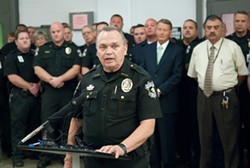
Law enforcement’s role
Besides families, peers and preventionists, another participant in the youth addiction scenario is the law enforcement community, which often gets involved when the youth’s addiction spirals out of control.
Law enforcement also plays an active role in community outreach, targeting at-risk youth with various programs and departments.
It’s hard to know the magnitude or the extent of the problem in Oklahoma County, said Mark Opgrande, public information officer at the Oklahoma County sheriff’s office, because the problem can often be hidden. In 2012, Oklahoma ranked No. 7 nationally in underage drinking. Still, Oklahoma County is actively involved in a number of outreach and prevention programs geared toward youths.
“We have the Explore program, which gives kids who aspire to work in law enforcement a chance to experience the profession and also learn right from wrong,” he said. “We actively work within the community to do what we can to educate these kids.”
There’s also Red Ribbon Week, when school resource officers actively participate in the lives of the students they work with, including mentoring and Safe and Sober Prom in graduation season.
Retired Oklahoma County Sheriff John Whetsel said parents play a huge role in reducing the odds that their kids will abuse drugs or alcohol. Law enforcement cannot handle the problem alone.
“What children see and hear at home, in many cases, determines what they will be like as they get older,” he said. “There are lots of children who grow up and never experiment with drugs or alcohol. A lot of that comes from complacent attitudes from parents — not good, bad or indifferent. It’s just a fact.”
Hell and back
Todd said while he knows teenagers will be teenagers, in the end, it’s not worth all the pain.
“I want to tell those my age who are thinking about experimenting to be careful,” he said. “Don’t get lost in it. Focus on things that will make you happy for more than a couple of hours. From personal experience, those couple of intoxicated hours may end in the worst hours of your life.”
At the time of his interview with the Gazette, Todd said he was one year, 10 months and 25 days clean and sober.
It has been a hard path, he said, full of growing pains and doing things he does not always want to do.
“But at the same time, I am thankful for all the cops that got me in trouble, all the teachers and principals, all the people that hurt me and hated me,” he said. “Because without [those consequences], I would not have had the motivation to change and would not be where I am today. I am finally, finally at peace with myself.”
Print headline: High dive, Drug and alcohol abuse and addiction among Oklahoma students is real, and it’s a problem that communities, families and health professionals have to work together to remedy.


